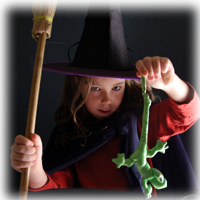 Halloween’s origins can be traced to the Celts, who lived 2,000 years ago in the areas that are now Ireland, the United Kingdom, and northern France. The Celts celebrated their new year on November 1. This day marked the end of the harvest and the beginning of winter.
Halloween’s origins can be traced to the Celts, who lived 2,000 years ago in the areas that are now Ireland, the United Kingdom, and northern France. The Celts celebrated their new year on November 1. This day marked the end of the harvest and the beginning of winter.
The Celts believed that on the night before the new year, the boundary between the worlds of the living and the dead blurred and the spirits of the dead could return to earth. The Celts commemorated the occasion by building sacred bonfires and dressing in costumes made from animal skins.
When Christianity spread to the Celtic lands, November 1 was deemed All Saints’ Day. The celebration was also called All Hallows Day from the Middle English word hallow, meaning sanctify. The night before became known as All Hallows Eve or Hallow E’vn, which eventually became Halloween.
Irish and Scottish immigrants brought Halloween traditions to North America in the 1800s. Halloween is now celebrated in the United States, Canada, the United Kingdom, Ireland and other parts of the Western World.
Trick-or-treating may have originated with the ancient practice of leaving food and wine to appease roaming spirits or with the medieval practice of “souling” – the practice of poor individuals begging for food and being given pastries called “souls cakes” in return for their promise to pray for the dead.
On Halloween, people who needed to leave their houses after dark would wear masks so that wandering ghosts would mistake them for fellow spirits.
The Irish had a tradition of carving lanterns from turnips and displaying them on All Hallows Eve. In America, these immigrants found pumpkins to be more readily available and easier to carve than turnips and Jack-O-Lanterns soon became a Halloween tradition.
The name comes from the Irish legend of Stingy Jack, a mean man, who tricked the devil into promising not to take his soul when he died. When Jack died, he was denied entrance into heaven because he had lived a worthless life. The devil was bound by his promise and couldn’t take Jack into hell. Instead, Jack was destined to forever wander the void between Heaven and Hell. When Jack complained of the darkness the devil tossed him an ember from the flames of Hell. Jack placed the ember in a hollowed-out turnip to light his way.